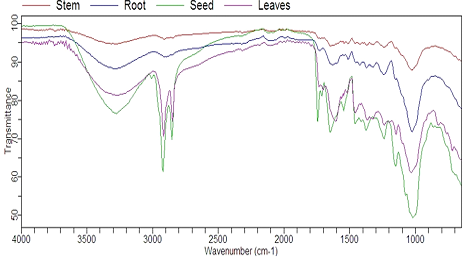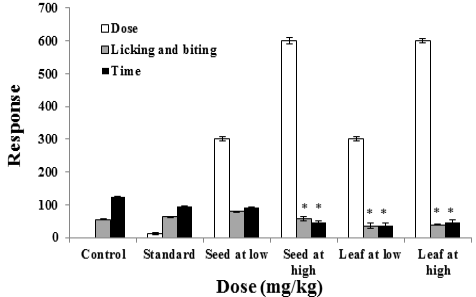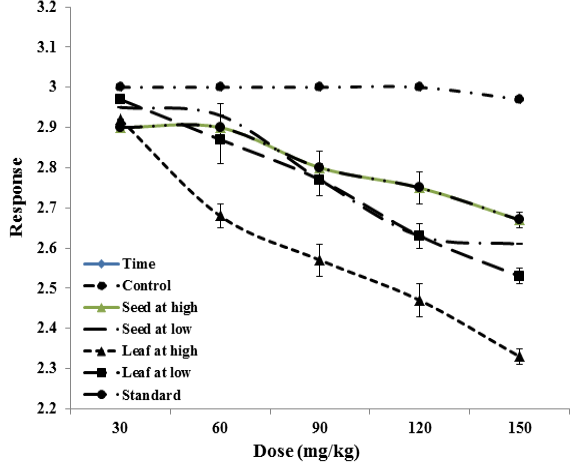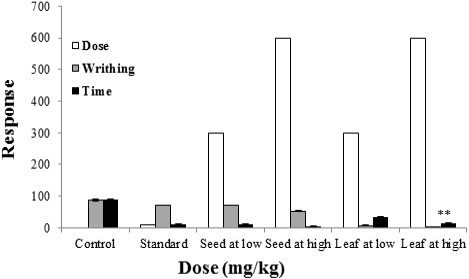Phytochemical and Pharmacological Potential of Camellia sinensis L.
Phytochemical and Pharmacological Potential of Camellia sinensis L.
Saima Rubab1,3*, Ghazala H Rizwani2, Arjumand Iqbal Durrani3, Iram Liaqat4*, Urooj Zafar5, Mahjabeen6, Farah Batool7, Noor-E- Seher3, Naveera Younas3 and Ayesha Sadiqa8
Fourier transform infra-red (FTIR) spectra of different parts of C. sinensis L.
Effect of C. sinensis L. ethanolic seed and leaf extract on licking and biting response along with time duration in six mice groups in two phases categorized as (0-300s) early phase at low (300mg/kg) and high (600mg/kg) doses, respectively. Seed treated mice group at high dose showed significant decrease in licking and biting responses at high dose, while leaf group showed significant decrease at both low and high doses compared to control and standard groups.
Comparative study of reduction in oedema in the hind paw of mice with passage of time among different groups. Control group showed persistent inflammation in the hind paw as no dose was given in this group. Significant reduction in the inflammation was observed in the leaf extract at high dose among the groups. Seed at high dose produced the same effect as that was observed in standard group.
Relation between the reduction in the number of time and writhes among the groups. Control group showed high count of writhes for greater amount of time. Significant reduction in the time and number of writhes was observed in the case of leaf extract at high dose which were better than seed extract at the same dose level. The results showed that crude extract of seed and leaf produce highly significant results compared to the standard.













